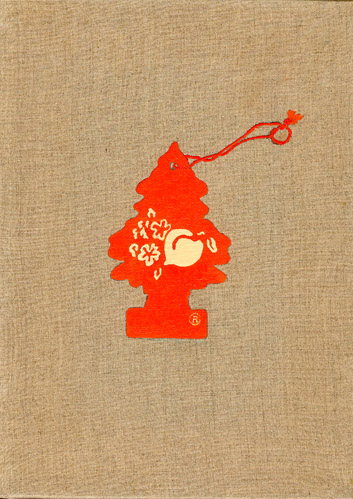The idea of eternal return is a mysterious one, and Nietzche has often perplexed other philosophers with it: to think that everything recurs as we once experienced it, and that the recurrence itself recurs ad infinitum!
… putting it negatively, the myth of eternal return states that a life which disappears once and for all, which does not return, is like a shadow, without weight, dead in advance, and whether it was horrible, beautiful, or sublime, its horror, sublimity and beauty mean nothing…
In the world of eternal return the weight of unbearable responsibility lies heavy on every move we make. This is why Nietzche called the idea of eternal return the heaviest of burdens (das schwerste Gewicht)…
But is heaviness truly deplorable and lightness splendid?
Milan Kundera, The Unbearable Lightness of Being
The Capital Paintings are a re-iteration, re-enactment or re-telling of a previous body of work by the artist, Capital, where he transcribed by hand the entire three volumes of Karl Marx’s Das Capital onto 480 two dimensional objects. (These objects were randomly selected but mostly identifiable as items deriving from commercial or industrial production: bank statements; legal tender; advertisements; junk mail and other ephemera. All of these selected objects were overwritten before being plastic laminated in a standard A4 format and presented in a grid formation).
These paintings are all made in oil on linen, scaled to actual size, and are exact reproductions of the original objects (without the overwriting)… so Marx’s text remains inscribed in the objects as an invisible referent. The work is utterly compelling, asserting itself as a massive presence in the gallery – in Kundera’s terms the weight of four years of labour coupled with the triviality of the original objects, so light they could float away into complete insignificance, save for the fact they have been rendered with painstaking detail in oil paint.
While the intention of the previous work was clear, the intention here is not. Obviously the paintings make fetish objects out of the detritus of everyday life… but was it necessary to exert four painstaking years of labour to make this point?
The statement issued by the gallery is not that clear either:
presented en mass the ephemera may act as a reminder of the extent to which our daily lives are overwhelmed by the detritus of consumerism. Alternatively, the work may be read as a questioning of the uneasy but necessarily interdependent relationship between creativity and consumerism. (see here)
Is that really saying anything?
More than anything else, the paintings exert a sense of loss and longing – I imagine for the experience of transcribing the original text and the intensity of that engagement. They express a nostalgia of sorts.
Frederic Jameson describes contemporary nostalgia culture as the representation of past ideals and objectives through the appropriation of codified styles. He discusses the collective desire for the images of a past one cannot retrieve as the explanation for a definite ‘historicism’ in postmodern culture, seeing this preoccupation with a sense of history as the result of a society in which nothing occurs.
“This very triviality of everyday life in late capitalism is itself the desperate situation against which all the formal solutions, the strategies and subterfuges, of high culture as well as of mass culture, emerge: how to project the illusion that things still happen, that events still exist, that there are still stories to tell, in a situation in which the uniqueness and the irrevocability of private destinies and of individuality itself seem to have evaporated?”(Signatures, p.87 see here)
Perhaps this is the point Darke is labouring to make.
Exhibition continues til February 16th 2008 at Temple Bar Gallery, Dublin


3 comments
Comments feed for this article
January 23, 2008 at 6:33 pm
noma08
This is a central point. Unfortunately I can’t expose all that I’d like to.
I just tell you: have you ever read Krauss’ “Originality as modern myth”? This is not the exact tile for the essay i mean. I read it in italian, into an antology of writings of her.
January 24, 2008 at 1:12 pm
pip
Hi noma, nice to hear from you again 🙂
Yes, I know the essay well (it’s full title is something like ‘Originality and other Modernist Myths’) – I actually lecture in an art institution and run a seminar on originality and appropriation.
Anyway, I think there are many intriguing questions to consider re: the Darke work, and I’m on the fence about it at the moment: I try to suspend ‘judgement’ (not the right word) of work that seems conceptually airtight!
May 23, 2008 at 10:53 am
Creativity/ Commodity/ Good/ Evil « Self Interest and Sympathy
[…] organised for Colin Darke’s exhibition at Temple Bar Galleries, Dublin, written about here. [February 8th […]